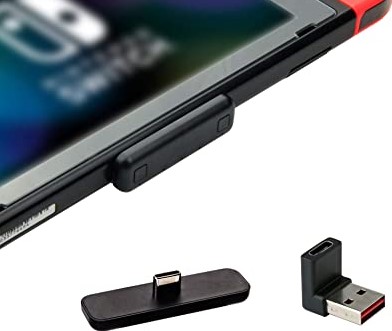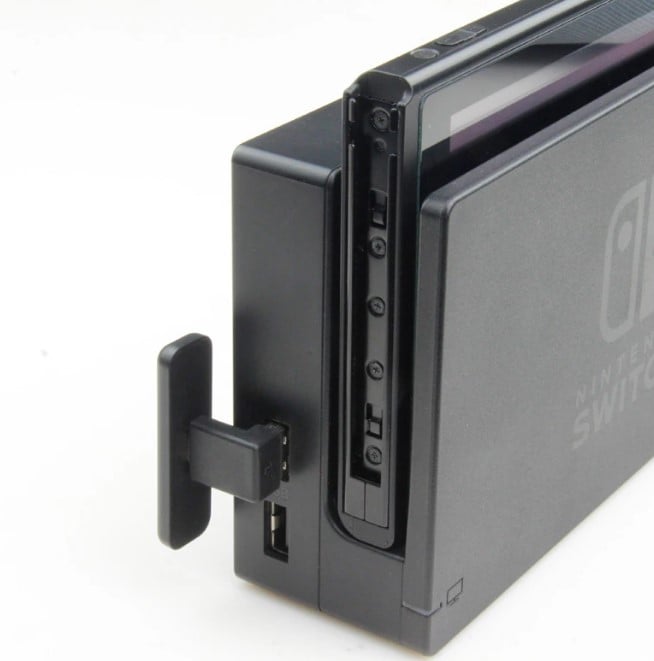How To Connect Bluetooth Headphones To Nintendo Switch | New in 2026
The Nintendo Switch is an excellent gaming platform that lets you continue to enjoy your favorite game on the move. You can bring it anywhere and have fun while on plane, bus or train but if you don’t want to bother other people with your game’s audio, you’ll have to either use a wired headset via a headphone jack or a Bluetooth headphone. But while the Switch does have Bluetooth support, you’ll be surprised to know that you can’t connect your Bluetooth headset directly to it. In this article, we’ll show you how to connect Bluetooth headphones to a Nintendo Switch and what type of special devices (using a USB dongle via USB-C port) you need to make it work.
| Product | Brand | Name | Price |
|---|---|---|---|
 | Kidult | Gulkit Route Air Switch Bluetooth Adapter Wireless Audio Transmitter | Check Price on Amazon |
 | Bionik | Bionik BT Audio Sync Wireless Bluetooth Adapter: Compatible with Nintendo Switch and Switch Lite | Check Price on Amazon |
* If you buy through links on our site, we may earn an affiliate commission. For more details, please visit our Privacy policy page.
Does the Nintendo Switch support Bluetooth headphones?
The straight answer is yes and no. Nintendo does not manufacture its own Bluetooth headphones for the Switch so there’s no first party accessory that you can use. The Bluetooth functionality of the Switch is primarily designed to connect the Joy-Con controllers and it can’t be repurposed for audio streaming.
However, the USB-C port at the bottom of your Switch can be used to act as a connection point to plug-in a third party Bluetooth adapter, also known as Bluetooth transmitter, so you can use a wireless headset like a Samsung Galaxy Buds, or any other Bluetooth headphones while playing.
Can you connect a Bluetooth to Nintendo Switch?
Yes, you can use Bluetooth headphones or any wireless headphones with your Nintendo but as mentioned above, you’ll have to buy an additional accessory called a Bluetooth adapter with a male USB-C plug to make it work.
I personally tried using the Gulikit Router Air Bluetooth adapter and it works well with my Samsung Galaxy Buds. You can also use another third party Bluetooth transmitter of your choice. There’s a whole lot of inexpensive sets of Bluetooth transmitter on Amazon. Just make sure to do some digging before confirming your order to ensure that the specific transmitter says it works on a Nintendo Switch.
How to connect your bluetooth headphones to Switch
The Gulikit Router Air Bluetooth USB dongle package that I’m using lets me connect my Bluetooth headphone to my Nintendo Switch in both handheld and docked mode. Let me show you how to do each of these setups below.
Method 1: Connect your Bluetooth headphone in handheld mode

- Before plugging in the Gulikit Router Air, make sure that your Switch is turned on. The adapter will not work if the Nintendo Switch is on standby or powered down state.
- Plug in the Gulikit Router Air USB dongle at the bottom USB-C port.
- Press and hold the A or B button on the Gulikit Router Air for about 4 seconds until the white light starts flashing. This indicates that the adapter is now in pairing mode.
- On your Bluetooth headphone, make sure to also turn its pairing mode on. In the case of a Samsung Galaxy Buds, I simply need to tap and hold the touchpads while in my ears.
- If the Gulikit Router Air has paired successfully with your Bluetooth headsets, the white lights should remain constant and stop flashing.
- Try opening a game or app in your Switch to see if the audio is now working on your Bluetooth headsets.
Method 2: Connect your Bluetooth headphone in Docking mode
If you want to play on your Nintendo Switch on a large screen like a TV or PC monitor, you can continue streaming game audio directly to your Bluetooth headphones while in a docking station. Learn how to do that by following the steps below.

- Assemble the Gulikit Route Air as shown in the picture.
- Connect the Gulikit Route Air to the USB port in your Nintendo Switch dock.
- Once the Gulikit Route Air shows a white light, press and hold the A or B button on the Gulikit Router Air for about 4 seconds until the white light starts flashing. This indicates that the adapter is now in pairing mode.
- On your Bluetooth headphone, make sure to also turn its pairing mode on. In the case of a Samsung Galaxy Buds, I simply need to tap and hold the touchpads while in my ears.
- If the Gulikit Router Air has paired successfully with your Bluetooth headphones, the white lights should remain constant and stop flashing.
- Try opening a game or app in your Nintendo Switch to see if the audio is now working on your Bluetooth headphones.
How to pair Bluetooth headphones to your Nintendo Switch using the headphone jack?
The other method to connect wireless Bluetooth headphones to your Nintendo Switch is by using the 3.5mm port at the top of your console. Just like the methods above (using the USB-C port), you also need to buy an additional accessory like TaoTronics adapter or TROND 2-in-1 receiver. Any Bluetooth adapter that has a 3.5 mm audio in jack should work. Again, do some research if you intend to buy one online for your Switch.
The general steps to set up a 3.5mm Bluetooth adapter should be straightforward. Just make sure that you charge the adapter first before plugging it in to your Switch. Once it’s plugged in, follow the specific steps on how to enter its pairing mode so you can connect your Bluetooth headset to it.
| Product | Brand | Name | Price |
|---|---|---|---|
 | Kidult | Gulkit Route Air Switch Bluetooth Adapter Wireless Audio Transmitter | Check Price on Amazon |
 | Bionik | Bionik BT Audio Sync Wireless Bluetooth Adapter: Compatible with Nintendo Switch and Switch Lite | Check Price on Amazon |
* If you buy through links on our site, we may earn an affiliate commission. For more details, please visit our Privacy policy page.
Other interesting articles:
- How To Find And Change Nintendo Switch Friend Code in 2026
- How To Fix FIFA 21 Lost Connection To Your Opponent Error | PC
- How To Fix Nintendo Switch Controller Won’t Charge | 2021
- How To Fix Steam Not Detecting PS4 Controller | Easy Solutions 2021
Visit our TheDroidGuy Youtube Channel for more troubleshooting videos and tutorials.